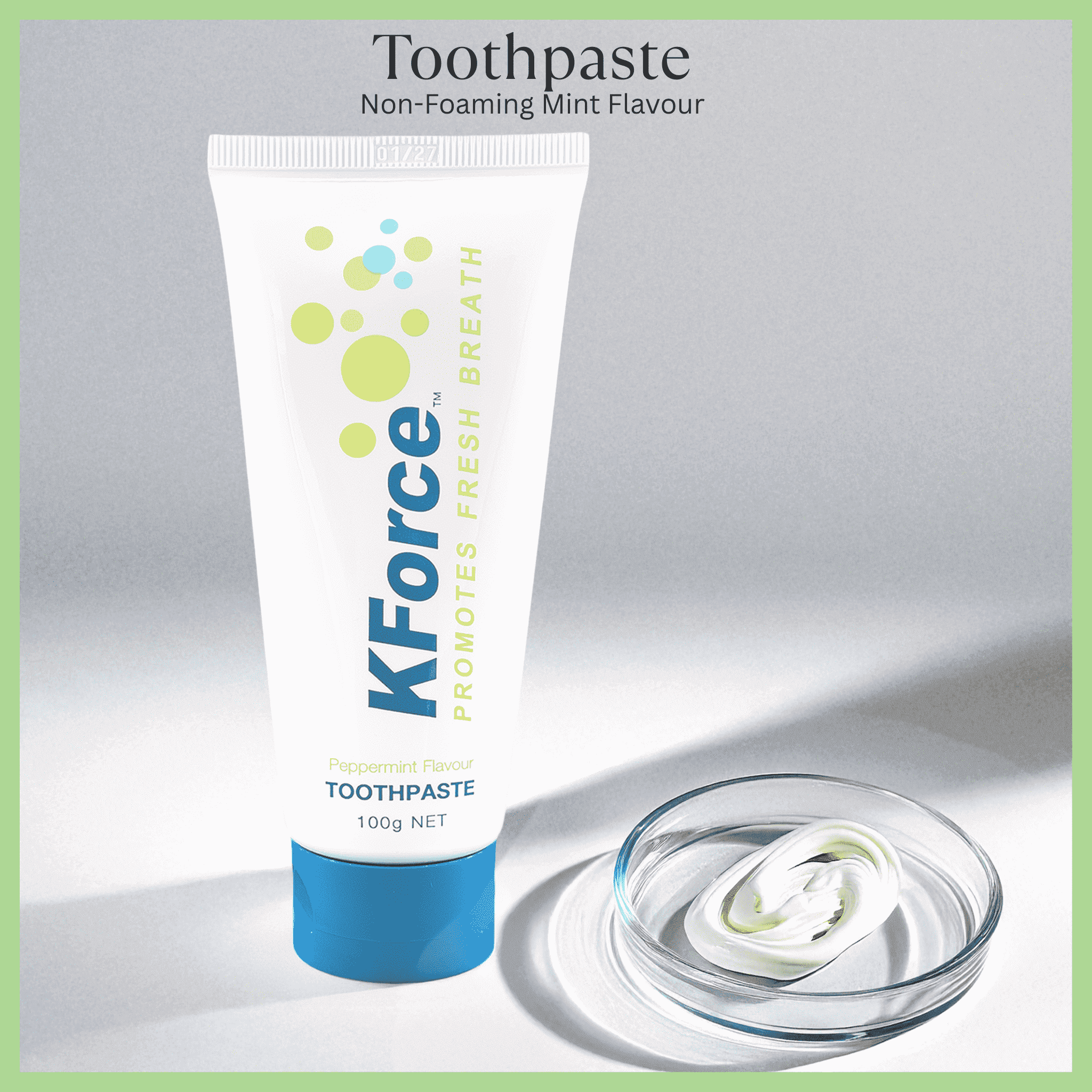Most people experience bad breath temporarily. When you first wake up in the morning or finish a garlicky meal, you may detect or smell your own bad breath. Consuming certain beverages like alcoholic drinks and coffee, as well as smoking cigarettes, can also cause you to have bad breath. Normally, this unpleasant odour goes away when you drink water and brush your teeth.
For some, however, bad breath is a daily problem they need to contend with. Persistent bad breath may indicate the presence of another illness or medical condition.
Halitosis is the medical term for bad breath. Sulphur-producing bacteria that typically reside on the surface of the tongue and in the throat are the main culprits behind halitosis. The back of the tongue and throat can occasionally emit pungent volatile sulphur compounds (VSC) as these bacteria begin to break down proteins at a very fast pace.
Having chronic bad breath can make one feel embarrassed and extremely self-conscious. It can lead to feelings of discomfort in daily social interactions and affect work and even personal relationships.
Unfortunately, however, most people with terrible breath are unaware that they have halitosis. They only find out when a co-worker, friend, or family member tells them. This can cause embarrassment, anxiety, and frustration and can erode a person’s self-confidence.
Some people who are aware they have halitosis rely on temporary bad breath treatment solutions like mints and mouthwash. When you resort to short-term halitosis treatment products, you’re not really addressing the problem but only masking it.
Adequate oral hygiene can frequently reduce bad breath. However, it’s usually better to visit your dentist if your halitosis continues. Dentists can determine the root cause of the problem. Once they make an accurate diagnosis, they can create a treatment plan for you that will resolve the problem and give you peace of mind.
Try the KForce Halitosis Treatment Kit to help prevent Bad Breath
There are many possible causes of halitosis or bad breath. This is why it’s crucial to seek bad breath treatment right away, as the solution depends on what’s causing your chronic bad breath.
There are various symptoms of halitosis or bad breath that can manifest themselves:
If you experience these symptoms (or a combination of these) and they don’t resolve themselves, it may be time to see your dentist.
Try the KForce Bad Breath Treatment Kit if you are experiencing these symptoms
Halitosis can have a significant negative effect on a person’s emotional well-being and social life as well as on the people around them.
When you have bad breath, you may notice people moving or turning their heads away from you.
Halitosis can make you feel self-conscious and anxious. You’ll agonise over thoughts that other people may be uncomfortable around you or won’t like you because of the way your breath smells.
Also, when other people know you have halitosis, they may inadvertently focus on your breathing and may end up avoiding close contact with you. This can affect your self-esteem negatively and may cause you to avoid mingling with people and other types of social interaction.
Aside from going to your dentist for diagnosis and treatment, tell them about your feelings if having halitosis is already affecting your social or emotional well-being. This way, they can advise you and refer you to a psychologist or other mental health professional.
If your halitosis persists for several hours or days, consult your dentist.
Your dentist will examine your mouth for typical causes of bad breath, including infections and gum problems. They can also give you oral hygiene tips, including properly caring for your dentures if you’re using them.
Once your dentist makes a diagnosis, they can suggest that you talk to your doctor or a specialist if they believe that a health issue that does not involve your oral health is at the root of your halitosis.
During your visit to your dentist, they’ll know whether you have halitosis if they detect an offensive odour in your mouth, breath, or saliva.
They’ll also check if you experience any symptoms like a runny nose, a dry mouth, or oral pain. This will make it easier for them to determine what’s causing your halitosis so they can create the right treatment plan.
Since there are many possible causes for bad breath, there is no single treatment for halitosis.
Ultimately, the halitosis treatment plan your dentist will create will depend on their findings or diagnosis.
Depending on the cause of your halitosis, they may advise you to:
If your dentist suspects that your halitosis is caused by a nondental medical condition, they may ask you to seek other treatments.
Try the KForce Bad Breath Treatment Kit
Halitosis cannot always be avoided. However, there are things you can do to prevent it from becoming a recurring or chronic issue:
Aside from the above, you can also use a tried-and-tested, medically proven bad breath treatment product like the KForce Bad Breath Kit by BreezeCare. KForce has been used by thousands of halitosis sufferers and is highly recommended by dentists for effective bad breath treatment.
Try the KForce Bad Breath & Halitosis Treatment Kit
BreezeCare founder and CEO Dr. Geoffrey Speiser is well-known in the field of dentistry as his company developed Halicheck in 2006. Halicheck is their ground-breaking clinic protocol that uses gas chromatography and is considered the gold standard for bad breath diagnosis. Halicheck produces highly accurate bad breath diagnoses.
Dr. Speiser, who has been a dentist since 1981, has devoted his career to helping people suffering from oral conditions, including dry mouth and halitosis. BreezeCare’s KForce range of dental products was developed through his painstaking research.
Aside from KForce, BreezeCare also features various dental care and halitosis treatment-supportive products like GC Tooth Mousse and Recaldent Chewing Gum.
BreezeCare continues to offer stellar oral healthcare diagnostic and treatment services, so if you need professional, high-quality, and effective dental solutions, book an appointment with us today!
Dispense Activated Balance Rinse for effective cleaning
Rinse your mouth with Activated Balance Rinse
Brush tongue and teeth with KForce toothpaste
Enjoy refreshing breath & soar your confidence
Avoid food for 30 minutes after treatment. Rinse, do not gargle the solution.
A. Detox for Two Days
Use Balance Rinse - twice daily
Use KForce Toothpaste
Use Tongue Cleaner
B./ Maintain Five Day Cycle
Use Balance Rinse - Day 1 Morning only
Use KForce Day Rinse - Other Mornings
Use KForce Toothpaste
Use Tongue Cleaner
Use the Nasal Flush to clean the throat area, morning and night or as often as feel it is needed.
Repeat Maintain Cycle until supplies exhausted. That is usually 3 cycles.




Bad breath comes from "biofilms" on the tongue, teeth and gums, and the back of the throat where the "gag" reflex starts.
BreezeCare uses an Oral Chroma "gas diagnostic" machine to analyse bad breath gases and determine their origin. Our testing is comprehensive, and includes the whole mouth, including teeth health, periodontal health, saliva health, and lifestyle triggers. We look at it all. Call us on 1300653335 for more details, or make an appointment to see us by clicking here->
KForce treatment is the gold standard for breath issues since 1995. We stand the test of time, because we work.

You will receive:
KForce Toothpaste
KForce Balance Rinse
KForce Day Rinse
Tongue Cleaner
Travel Bag
Full Instructions
Kit is designed to last 1 month, which is more than enough time to rid you of bad breath.
Refills can be purchased on our website.
The Bad Breath Kit has a Five Day Cycle and we recommend a Detox for the first Two Days. Activate the Balance rinse before use. See instructions on the bottle.
Detox for Two Days
Use Balance Rinse - twice daily
1. Dispense 5mL of activated balance rinse into measure cup supplied.
2. Dip Toothbrush in the mix & brush teeth & tongue
3. Rinse mouth with remainder of the mix for 30 seconds
Use KForce Toothpaste (Morning & Night) - gently clean teeth, gums & tongue
Use Tongue Cleaner (Morning & Night) - gently scrape from back to front
Rinse mouth and avoid food for 30 minutes
Maintain Five Day Cycle
Use Balance Rinse - Day 1 Morning only
Use KForce Day Rinse - Other Mornings
Use KForce Toothpaste (Morning & Night)
Use Tongue Cleaner (Morning & Night)
Use Nasal Flush to clean the throat area, morning and night or as often as you feel is needed.
Repeat Five Day Cycle until supplies exhausted. That is usually 3 cycles.
KForce Oral has been the gold standard in bad breath treatment and fresh breath maintenance since 1995. Dr Speiser the CEO of BreezeCare developed this range at our Sydney Clinic. It has then been improved with consultations at Otago University and Georgia Regents University.
All KForce products in the Bad Breath Kit are made in Australia.
Free Shipping Worldwide for orders over $100. Sent from our warehouse in Sydney.
If you do not see results that you are happy with from the kit, we will treat you for free at our clinic in Edgecliff, Sydney

Free delivery for orders over $99.95

Visit our clinic in Sydney for a Full Breath Consultation

Have any questions? Click the chat icon on the right side of the page to speak with us.

100% secure online payments.